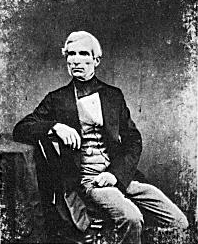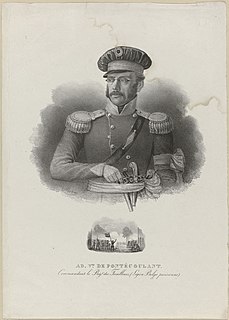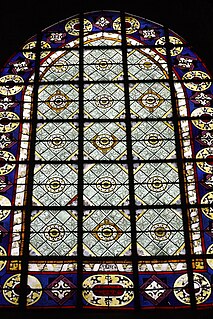Bibliography
Bontemps on Glassmaking: the Guide du Verrier of Georges Bontemps. Translated by Michael Cable, 2008
History of the Firm of Chance Brothers & Co. Glass and Alkali Manufacturers, A, J.F. Chance, 1919
Georges Bontemps was a director of an eminent French glass manufacturer in the 19th century, moved to England to work and is accredited with the re-invention of a technique for making ruby-coloured glass that was first used by the Venetians in the 16th century. He was a jury member at the 1862 International Exhibition in London and the Exposition Universelle (1867) in Paris.
Georges Bontemps was a director of a French glass manufacturer based at Choisy-le-Roi until 1848. In 1830, he acted as an agent to the Englishman Robert Lucas Chance, assisting in the recruitment of French and Belgian glass workers to work for him – an illegal act that could have resulted in both men being imprisoned. Chance was looking for ways to improve the production of flat glass at his newly formed factory in Smethwick, Birmingham.
In 1848, when the Second French Revolution forced Georges Bontemps to flee to England, he found employment at Chance Brothers, due to his longtime friendship with Chance.
Bontemps was employed at Chance Brothers as Superintendent of the Coloured & Ornamental departments from 1848 until 1854. During this time, he helped advise on the optics that Chance's fledgling operation was trying to develop for use in lighthouses. He was also instrumental in producing a flint and crown glass disc, measuring 29-inches (74 cm) in diameter, which ironically, was purchased by the French government to be used in a telescope. He is attributed with the re-invention of a technique used to make ruby-red glass that was first produced by Venetian glassworkers in the 16th century.
Bontemps reported on the glass displays at the Great Exhibition of 1851 and was a jury member at the 1862 International Exhibition in London and the Exposition Universelle (1867) in Paris.
Despite being a great friend of Antoine Claudet (Antoine-François-Jean Claudet), the eminent Victorian photographer and inventor, only one photograph is known to exist of Georges Bontemps and this was not taken by Claudet.
Guide du Verrier, traite historique et pratique de la Fabrication des Verres, Cristaux, Vitraux
Paris Librairie du Dictionnaire des Arts et Manufactures: 1868
Bontemps on Glassmaking: the Guide du Verrier of Georges Bontemps. Translated by Michael Cable, 2008
History of the Firm of Chance Brothers & Co. Glass and Alkali Manufacturers, A, J.F. Chance, 1919

The Champ de Mars is a large public greenspace in Paris, France, located in the seventh arrondissement, between the Eiffel Tower to the northwest and the École Militaire to the southeast. The park is named after the Campus Martius in Rome, a tribute to the Roman god of war. The name alludes to the fact that the lawns here were formerly used as drilling and marching grounds by the French military.

The third Paris World's Fair, called an Exposition Universelle in French, was held from 1 May to 10 November 1878. It celebrated the recovery of France after the 1870–71 Franco-Prussian War.

Étienne Pierre Théodore Rousseau was a French painter of the Barbizon school.

Jacques Ignace Hittorff or, in German, Jakob Ignaz Hittorff was a German-born French architect who combined advanced structural use of new materials, notably cast iron, with conservative Beaux-Arts classicism in a career that spanned the decades from the Restoration to the Second Empire.

Antoine François Jean Claudet, was a French photographer and artist active in London who produced daguerreotypes.

The French Industrial Exposition of 1844, held in a temporary structure on the Champs-Élysées in Paris, was the tenth in a series of eleven French national industrial expositions held since 1798 to encourage improvements in progressive agriculture and in technology.

The International Exposition of 1867, was the second world's fair to be held in Paris, from 1 April to 3 November 1867. A number of nations were represented at the fair. Following a decree of Emperor Napoleon III, the exposition was prepared as early as 1864, in the midst of the renovation of Paris, marking the culmination of the Second French Empire. Visitors included Tsar Alexander II of Russia, a brother of the King William and Otto von Bismarck of Prussia, Prince Metternich and Franz Josef of Austria, Ottoman Sultan Abdülaziz, and the Khedive of Egypt Isma'il.

Louis Adolphe le Doulcet, comte de Pontécoulant was a French soldier and musicologist. He was the son of Louis Gustave le Doulcet, comte de Pontécoulant and the older brother of Philippe Gustave le Doulcet.

Chance Brothers and Company was a glassworks originally based in Spon Lane, Smethwick, West Midlands, in England. It was a leading glass manufacturer and a pioneer of British glassmaking technology.

Robert Wornum (1780–1852) was a piano maker working in London during the first half of the 19th century. He is best known for introducing small cottage and oblique uprights and an action considered to be the predecessor of the modern upright action which was used in Europe through the early 20th century. His piano manufacturing business eventually became Robert Wornum & Sons and continued half a century after his death.
Moynat is one of the oldest Parisian trunk maker in history. Their first studio was opened in Paris in 1849 founded by trunk-makers Octavie and François Coulembier. They joined forces with a specialist in travel goods named Pauline Moynat, to open the first store of avenue de l’Opera. Moynat was one of the first leather goods houses of its day. Known for its traditional know-how and skills base in handcrafting made-to-order luggage and travel goods, the house became known for its designs for the automobiles, as well as for its technical innovations such as making its trunks lighter and waterproof, and for its participation in the various World's Fairs.

François-Désiré Froment-Meurice was a French goldsmith, working in a free and naturalistic manner in the tradition of Mannerist and Baroque masters. One version of his Coupe des Vendanges, the "Harvest Cup", made in 1844, is conserved at the Musée du Louvre.

Jean Joseph Léon Farcot was a French engineer and industrialist whose factories employed up to 700 workers. He was also a prolific inventor. He was one of the pioneers of the servomechanism, where a feedback loop helps control a machine. The invention lets one helmsman control a ship's rudder weighing several tons.

Robert Jefferson Bingham was an English pioneer photographer, mainly active in France, making portraits and reproductions of paintings. He is one of the first photographers to use and write about the collodion process, which he claimed to have invented.

Claude Montal was a French author who wrote the first comprehensive text on piano tuning and repair, "l'Art d'accorder soi-même son piano...", published in 1836. He subsequently became a major manufacturer of pianos, with several patented inventions to his credit. He lost his sight at a young age and helped to establish the career of piano technician as a profession well suited for blind people.

Élisabeth Thuillier and Marie-Berthe Thuillier were a mother-daughter team of French colourists. They ran a workshop in Paris, where their employees hand-coloured early films and photographic slides using their plans and colour choices. They are remembered especially for the work they did for the director Georges Méliès.

Charles Oudin is one of the oldest French horology firms. It was founded in Paris at the end of the 18th century by Jean-Charles Oudin, who came from a family of clockmakers in Northwest France. There were four generations of Oudins who were clockmakers, as of the mid 18th century, first in the Meuse region and later, in Paris. Several members of the Oudin family worked for the master watch and clockmaker Abraham-Louis Breguet.

The Exposition des produits de l'industrie française was a public event organized in Paris, France, from 1798 to 1849. The purpose was "to offer a panorama of the productions of the various branches of industry with a view to emulation". It was a precursor to the Great Exhibition of 1851 in London.

François Barthélemy Arlès-Dufour was a French silk merchant and leading exponent of Saint-Simonianism. He was born to a poor family, had little formal education and began work in a shawl factory at the age of 16. Later he joined a silk company based in Leipzig, Germany, married into the owners' family and was placed in charge of its Lyon operations. Working first for his in-laws and then independently, he made a fortune in silk. Arlès-Dufour also became involved in banking, railways and the Suez canal project. He played an important role in the Lyon Chamber of Commerce, and as a member of the jury in various international expositions. He believed in free trade and in social institutions that would help the most disadvantaged social classes.

Prosper Lafaye, originally Lafait was a French painter at the court of King Louis-Philippe I. He also worked as a designer and was a master stained glass artist.